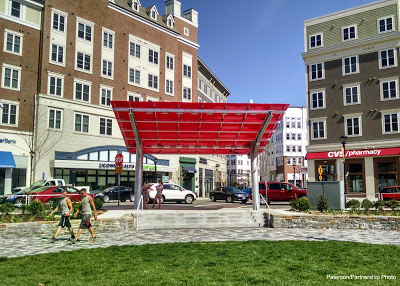Largest Community Survey in U.S. Now Underway in Connecticut; 15,000 People to be Interviewed
/The 2015 Community Wellbeing Survey is set to become the largest cross-sector community survey in the United States, interviewing 15,000 randomly-selected residents this spring and summer including individuals from every town and city in Connecticut. The initiative is creating the first-ever shared measures of quality of life, happiness, and community health across all neighborhoods, towns, regions, and the state as a whole. These interviews will reveal findings that are currently unavailable at a local level from any other public data source.
New Haven-based DataHaven is working with leaders from more than 100 stat e and local government agencies, major health care and academic institutions, and community and philanthropic organizations to design and conduct the program.
e and local government agencies, major health care and academic institutions, and community and philanthropic organizations to design and conduct the program.
The organization has combined many existing grassroots and regional efforts-including DataHaven's own 2012 Greater New Haven Wellbeing Survey-into a single, exceptionally high-quality survey covering all of Connecticut and a few adjacent sections of New York State.
Survey-takers are based at the Siena College Research Institute, a leading independent research organization near Albany with a staff of more than 100 highly-trained English- and Spanish-speaking interviewers. Calls began in April and will continue throughout the summer. (The survey calls will come from the 518 area code.)
“Our initial feedback from residents and our previous experience with this survey shows that people like to answer these questions,” says Mark Abraham, Executive Director of DataHaven, which is spearheading the campaign. “They are answering questions about their own happiness and health, their family’s financial security, and how their communities and neighborhoods are faring. These questions show that we care about how they feel.”
Seeing the potential impact of its results, dozens of Connecticut’s leading hospitals, government agencies, universities, and charities are backing the 2015 Community Wellbeing Survey with major donations. Supporters joining DataHaven include regional community foundations, United Ways, and health care providers located in Hartford, New Haven, Bridgeport, Stamford, Waterbury, New Britain, Norwalk, Danbury, Bristol, Derby, New London, and elsewhere.
This nationally recognized program provides neighborhood- and regional-level information not available from any other source on community vitality, health, family economic security, and individual happiness. Other topics such as civic engagement, transportation, housing,and employment – even satisfaction with government and community life – are included. The mission of the initiative is to produce the highest-quality, neighborhood-level information on issues that are most meaningful to local residents, and to foster collaboration between the hundreds of organizations, institutions, businesses, and agencies that are working to build stronger communities.
“With such a detailed snapshot, state and local community leaders will be able to better serve the health and well-being needs of our communities,” says Abraham.
Partners providing significant funding for the program are representative of each region of Connecticut:
- In Fairfield County, $200,000 has been committed by leading organizations such as Fairfield County's Community Foundation, Bridgeport Hospital, Stamford Hospital, Greenwich Hospital, and the United Way of Coastal Fairfield County.
- In south-central Connecticut, The Community Foundation for Greater New Haven along with Yale-New Haven Hospital, Workforce Alliance, United Way of Greater New Haven, and others have joined forces to commit over $100,000 in funding.
- In Greater Hartford and New Britain, the program has drawn over $100,000 in support from the Hartford Foundation for Public Giving, Community Foundation of Greater New Britain, Trinity College Office of the President and Center for Urban and Global Studies, Saint Francis Hospital and Medical Center, Johnson Memorial Medical Center, and others.
 Additionally, DataHaven has secured funding to ensure that residents of Connecticut's smaller cities and rural areas are included to the same degree as those living in its major metropolitan areas. Nearly $200,000 has been committed from organizations such as the Connecticut Community Foundation, Valley Community Foundation, Lawrence + Memorial Hospital, Ledge Light Health District, Community Foundation of Eastern Connecticut, Connecticut Housing Finance Authority, and others.
Additionally, DataHaven has secured funding to ensure that residents of Connecticut's smaller cities and rural areas are included to the same degree as those living in its major metropolitan areas. Nearly $200,000 has been committed from organizations such as the Connecticut Community Foundation, Valley Community Foundation, Lawrence + Memorial Hospital, Ledge Light Health District, Community Foundation of Eastern Connecticut, Connecticut Housing Finance Authority, and others.
Results from the survey will be published in a series of local and statewide reports throughout late 2015 and 2016, helping to shed light on progress made toward various longstanding community priorities, including financial security for families and opportunities for children to succeed.
"We believe the 2015 Community Wellbeing Survey, the most comprehensive local level survey of its type in the United States, will be of great value to neighborhoods and organizations striving to make our cities and towns even better places to live and work,"says Abraham.
DataHaven is a non-profit organization with a 25-year history of public service to Greater New Haven and Connecticut. DataHaven’s mission is to improve quality of life by compiling, sharing, and interpreting public data for effective decision making. DataHaven is a formal partner of the National Neighborhood Indicators Partnership of the Urban Institute in Washington, DC. Last fall, the Community Indicators Consortium presented an “Impact Award” to DataHaven’s Executive Director Mark Abraham, honoring Abraham with a trophy and opportunity to speak to the organization's annual assembly. Abraham illustrated how DataHaven and its partners across Connecticut have collected and used public data to advance community change.


 s in Connecticut with the highest median age on July 1, 2014, were Litchfield at 46.3, Middlesex at 44.6 and New London at 40.9. (Median age means that half the population was older than this age and half younger.)
s in Connecticut with the highest median age on July 1, 2014, were Litchfield at 46.3, Middlesex at 44.6 and New London at 40.9. (Median age means that half the population was older than this age and half younger.) re diverse than millennials are the youngest Americans. The Census Bureau indicates that those younger than 5 years old became majority-minority for the first time, with 50.2 percent being part of a minority race or ethnic group, as of 2014 data. Reflecting these younger age groups, the population as a whole has become more racially and ethnically diverse in just the last decade, with the percentage minority climbing from 32.9 percent in 2004 to 37.9 percent in 2014.
re diverse than millennials are the youngest Americans. The Census Bureau indicates that those younger than 5 years old became majority-minority for the first time, with 50.2 percent being part of a minority race or ethnic group, as of 2014 data. Reflecting these younger age groups, the population as a whole has become more racially and ethnically diverse in just the last decade, with the percentage minority climbing from 32.9 percent in 2004 to 37.9 percent in 2014.
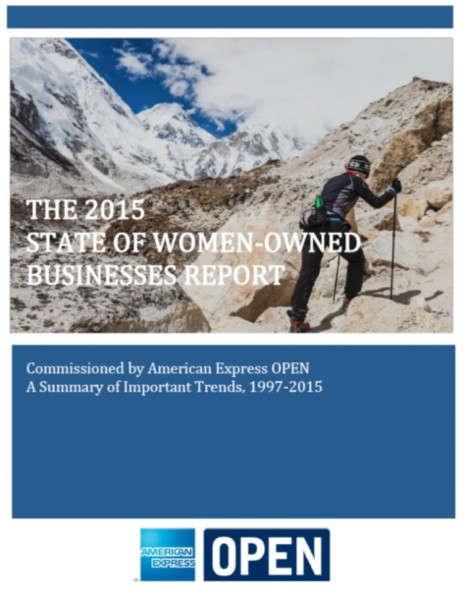 The newly released report, looking back at the past two decades, found that women-owned firms are found in every state and in every industry:
The newly released report, looking back at the past two decades, found that women-owned firms are found in every state and in every industry:
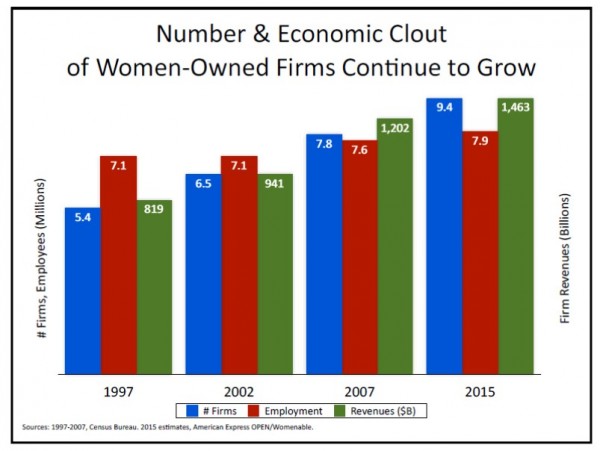
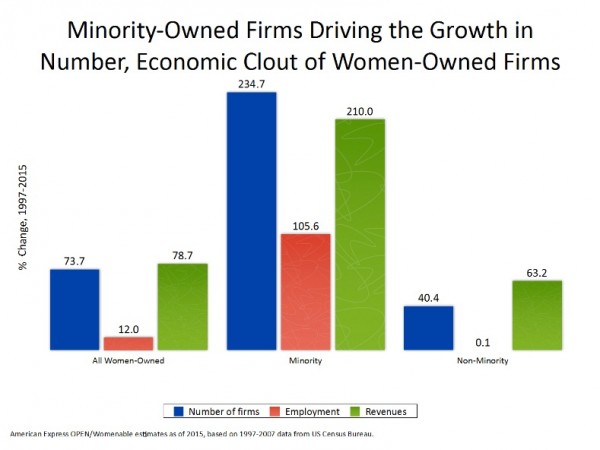


 uth Dakota, Wisconsin, and Minnesota, where it ranks 2nd. Anderson also ranks high in Massachusetts and Rhode Island, at #6.
uth Dakota, Wisconsin, and Minnesota, where it ranks 2nd. Anderson also ranks high in Massachusetts and Rhode Island, at #6. The #10 surname in the U.S. is Wilson, which is described as having “a checkerboard-like popularity across the United States.” In Connecticut, Wilson ranks as the 13th most popular last name.
The #10 surname in the U.S. is Wilson, which is described as having “a checkerboard-like popularity across the United States.” In Connecticut, Wilson ranks as the 13th most popular last name.





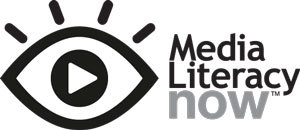


 Fixed route transportation operates along a prescribed route and on a fixed schedule, and includes buses and light rail. In 2014 in Connecticut, buses provided over 43 million passenger trips and rail provided over 39 million passenger trips. Demand-responsive transportation provides routes and scheduling more individually tailored to the needs of the user. The Americans with Disabilities Act (ADA) requires transit agencies to provide paratransit service, subject to certain parameters, to people with disabilities who cannot use the fixed route services. Paratransit ridership in Connecticut in fiscal year 2014 under the ADA totaled over one million rides, and dial-a-ride ridership neared 100,000 rides.
Fixed route transportation operates along a prescribed route and on a fixed schedule, and includes buses and light rail. In 2014 in Connecticut, buses provided over 43 million passenger trips and rail provided over 39 million passenger trips. Demand-responsive transportation provides routes and scheduling more individually tailored to the needs of the user. The Americans with Disabilities Act (ADA) requires transit agencies to provide paratransit service, subject to certain parameters, to people with disabilities who cannot use the fixed route services. Paratransit ridership in Connecticut in fiscal year 2014 under the ADA totaled over one million rides, and dial-a-ride ridership neared 100,000 rides. ommunities are located within a reasonable distance of quality, dependable public transportation.” In addition, policy makers were urged to “identify funding streams to sustain, coordinate, grow and make more convenient both fixed route and demand-responsive transportation options (including providing door-to-door service), and provide technical assistance to support regionalization efforts.”
ommunities are located within a reasonable distance of quality, dependable public transportation.” In addition, policy makers were urged to “identify funding streams to sustain, coordinate, grow and make more convenient both fixed route and demand-responsive transportation options (including providing door-to-door service), and provide technical assistance to support regionalization efforts.”
 “Studies show that kids who are physically active have higher test scores, are more likely to go to college, and smoke and drink less,” he added. ”Sports can also help build life skills, including enhancing self-esteem, unifying teams and driving social inclusion. By driving support to entities enhancing access to sports, we can help.”
“Studies show that kids who are physically active have higher test scores, are more likely to go to college, and smoke and drink less,” he added. ”Sports can also help build life skills, including enhancing self-esteem, unifying teams and driving social inclusion. By driving support to entities enhancing access to sports, we can help.” er on the Kansas state assessments than non-athletes, in all subject areas. They are clearly learning something in their classes.”
er on the Kansas state assessments than non-athletes, in all subject areas. They are clearly learning something in their classes.” The July event is part of a year-long effort to listen, learn, and share with older adults, their families, their caregivers, community leaders, and experts in the aging field on how to best address the changing landscape of aging in the coming decade, officials said. Since the 1960’s the
The July event is part of a year-long effort to listen, learn, and share with older adults, their families, their caregivers, community leaders, and experts in the aging field on how to best address the changing landscape of aging in the coming decade, officials said. Since the 1960’s the 
 ment; how to remain healthy as we age; what types of services and supports can help older Americans remain independent in the community as we age; and how to support this care and the caregivers who provided it; and how to protect older Americans from financial exploitation, abuse and neglect.
ment; how to remain healthy as we age; what types of services and supports can help older Americans remain independent in the community as we age; and how to support this care and the caregivers who provided it; and how to protect older Americans from financial exploitation, abuse and neglect.
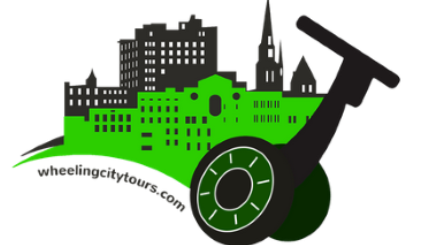
 For the first time in the history of the awards program, a state agency was also selected to receive an award. The CT Department of Transportation received a special award for Starting a Revolution: Integration of Land Use and Transit in recognition of the progressive nature of CTfastrak, the bus rapid transit system opened earlier this year. The awards jury that selected the winners gave the award because they felt the new busway represents a cultural shift in how Connecticut views transit, and wanted to acknowledge the future promise of transit oriented development that will hopefully result around the station locations.
For the first time in the history of the awards program, a state agency was also selected to receive an award. The CT Department of Transportation received a special award for Starting a Revolution: Integration of Land Use and Transit in recognition of the progressive nature of CTfastrak, the bus rapid transit system opened earlier this year. The awards jury that selected the winners gave the award because they felt the new busway represents a cultural shift in how Connecticut views transit, and wanted to acknowledge the future promise of transit oriented development that will hopefully result around the station locations.